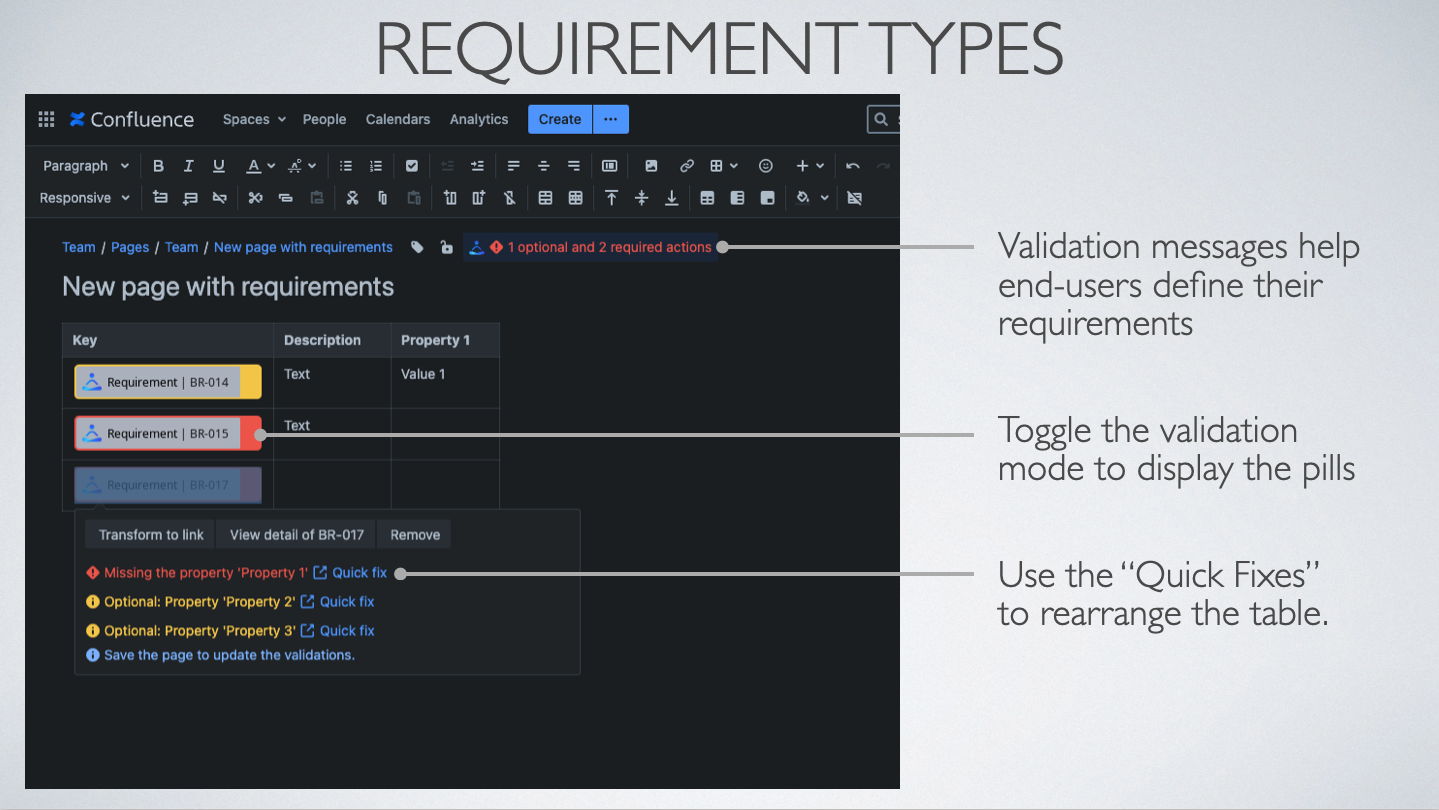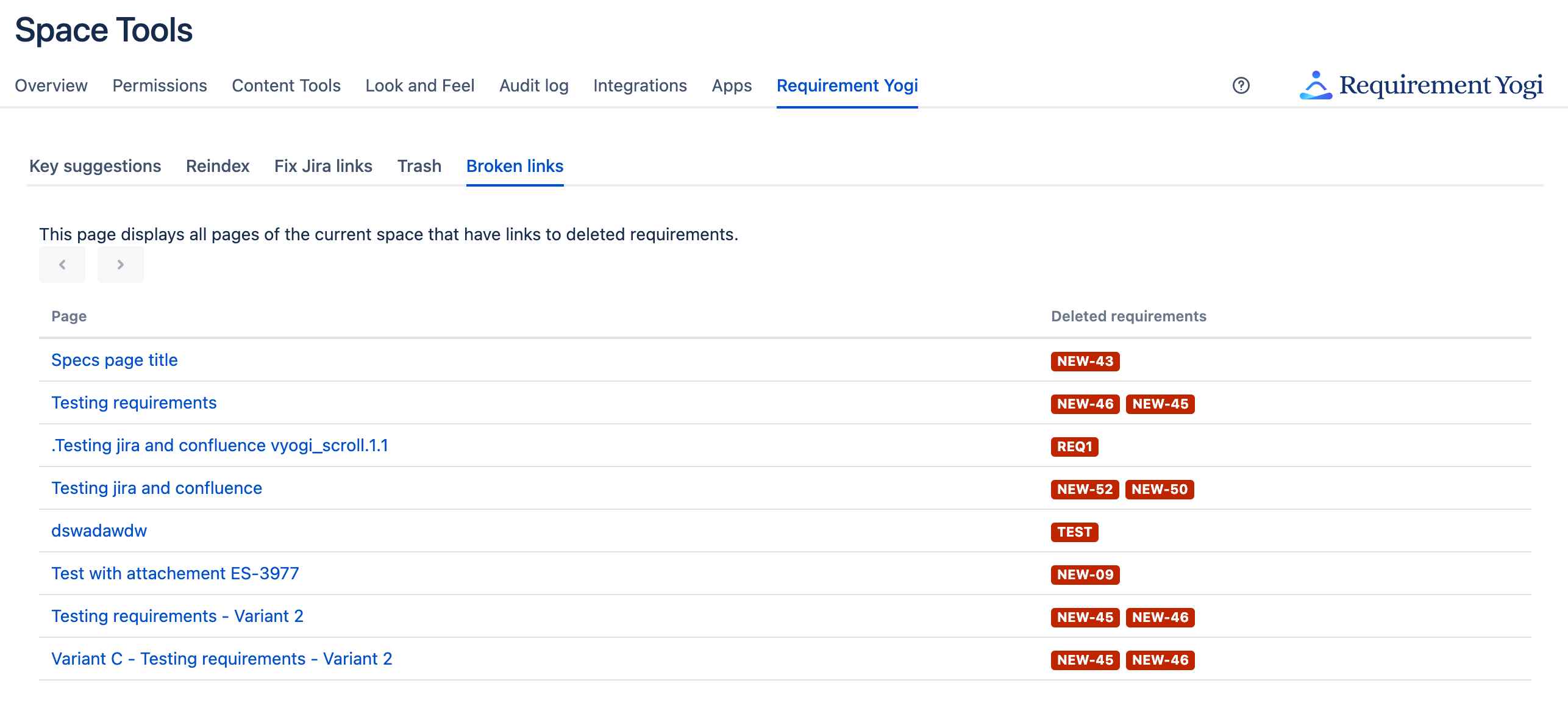New features: Requirement Types!
Requirement types allow customers to define rules that requirements must comply with, and have hints and quick-fixes in the editor to help align all requirements. See the details: Requirement Types
In this version, we’ve also made Indexation v2 the new default. Please contact us if your company is unable to migrate.

We believe this feature will be extraordinary for our champions, with the ability to define types, let users see the messages or use the quick-fixes, and have a much better “progressive organization” of their requirements. More screenshots on our page: Requirement Types .
Note to administrators
-
Removal of RY 2.x database tables (which was only kept for the migration path),
-
Removal of the deprecated feature “Public descriptions”,
-
Removal of the RIL implementation in Jira (which was our storage in RY 1.x — only necessary for migrations),
-
Indexation v2 is required.
No upgrade path from 2.x to 4.x.
-
3.0.0 was published in October 2021,
-
4.0.0 was published in January 2024, so all customers should already be using 3.x, which allows upgrading to 4.0,
-
From 2.6.16, customers must first install a recent 3.x version, before moving to 4.x.
-
They must check the upgrade tasks were successfully executed in 3.x.
-
That means we’ll remove:
-
The old AO tables,
-
All related upgrade tasks,
-
The entire 3.0.0 migration system, which disables/enables parts of the plugin at startup,
-
In Jira, the old native remote-issue-links kertuffle whose API was so slow that the plugin was faster implementing it separately.
-
It’s 10-15k lines of code.
-
No RIL migration in Jira
-
If your company hasn’t upgraded since 2017, then you will lose the part of the Jira-requirement links which were stored as RIL (“remote-issue links”, and old native API of Jira).
-
The solution is to migrate to 3.x first, then 4.0.
No Public Descriptions
-
This feature was deprecated and the default was enforced for everyone in August 2023 (https://requirementyogi.atlassian.net/browse/RY-1305),
-
This feature is removed in 4.0.
Indexing v2 is the (mandatory) default in 4.0
-
Upon upgrading, Requirement Yogi will move to Indexing V2.
-
The differences are explained there: https://docs.requirementyogi.com/data-center/choosing-the-indexing-engine
-
Customers can still downgrade to Indexing V1, but please contact us and explain why your company can’t adopt the Indexing V2. It’s faster, more accurate, testable, and it would allow us to remove 5k lines of old Javascript.
New feature: Broken Links report
-
Available since version
4.0.7 -
How to access: Space Admin
-
Report to find requirement links referring to deleted or moved requirements
-
Navigate to the page or the link from that report

Export Baselines from Data Center to the Cloud
If you are migrating from Server / Data Center to Cloud and want to keep your baselines, you can export them manually and reimport them into your Cloud instance.
Please find more information here: Migrating Baselines from Server to Cloud .
Join the community
We’ve created a mailing list, to tell you about new features, security vulnerabilities, and the community… , and the good news is that those categories are separated.
Go to https://www.requirementyogi.com/manage-profile/ to subscribe.
